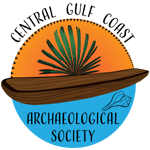Thursday, December 16, 2021
Feasting and Fishes: An Investigation into Seasonal Patterns, Labor Organization, and Monumental Architecture from Florida’s Crystal River Site (8CI1) and Roberts Island Shell Mound Complex (8CI40 and 41).
Liz Southard, Vice President, AWIARE
In recent decades, archaeological research has provided evidence that some mounds in the southeastern United States were constructed in short episodes. A large work force would have been required to accomplish these monumental projects. Shell mounds, in particular, provide an opportune type of architecture to investigate whether seasonal aggregations of laborers gathered at sites to engage in large-scale work projects because these mounds are primarily constructed of aquatic resources that leave signatures for what time of year they were caught or harvested. This study investigates whether the residents of the Crystal River site (8CI1) and Roberts Island Shell Mound Complex (8CI40 and 41) on Florida’s Gulf Coast were participating in seasonal deposition events involving the construction of monumental architecture and if feasting acted as a mechanism to attract the needed labor force. Marginal increment analysis was performed on red drum (Sciaenops ocellatus) and spotted seatrout (Cynoscion nebulosus) otoliths to determine what time of year these fishes were captured and eventually deposited in midden and mound contexts. The results of this investigation suggest fish remains recovered from mound contexts during excavations at these sites were primarily caught during winter months and could have been a feasting resource that aided in the Crystal River and Roberts Island communities’ ability to attract the labor force needed to accomplish the construction of the monumental architecture observed on the landscape today.
Liz Southard has ten years of archaeological field experience including two years of experience doing Cultural Resource Management. Liz received her B.A. in Anthropology from the University of South Florida Saint Petersburg and her M.A. in Applied Anthropology from the University of South Florida Tampa. She currently works at TerraXplorations, Inc. as a principal investigator and serves as Vice President for the Alliance for Weedon Island Archaeological Research and Education (AWIARE). Most of her experience comes from Florida and Georgia projects where she has worked as a project archaeologist and field director. Her main areas of interest include subsistence practices, seasonality studies, and settlement patterns during the Woodland period in the Southeast.


